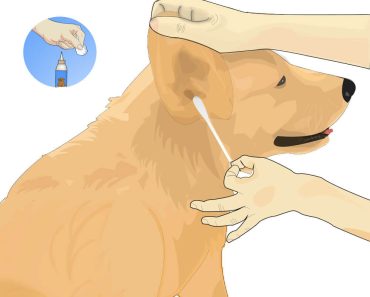
Are you a Golden Retriever owner looking for a meaningful way to give back to your community? Training your furry friend as a therapy dog might be just the thing! Golden Retrievers are a perfect fit for therapy work with their gentle and friendly demeanor.
In this article, we’ll cover everything you need to know about Golden Retriever therapy dog training, from their ideal temperament to the certification process and finding opportunities to help.
Table of Contents
Importance of therapy dogs
Therapy dogs play an important role in providing emotional support and comfort to people in need. They are trained to offer companionship and affection to those who are experiencing physical or mental health challenges.
Golden retriever Therapy dogs are often used in hospitals, nursing homes, schools, and disaster relief efforts to help individuals cope with stress, anxiety, and trauma. These dogs provide a unique type of healing that can’t be replicated through medicine or therapy alone.
Why Golden Retrievers make great therapy dogs
Golden Retrievers are one of the most popular breeds of therapy dogs and for good reason. They are known for their gentle, friendly, and calm nature, which makes them ideal for working with people in need. Golden Retrievers have a natural ability to sense when someone is feeling down or anxious and are quick to offer comfort and affection. They are also highly trainable, intelligent, and obedient, which allows them to perform tasks and follow commands required for therapy work.
In addition, their soft, fluffy fur and warm demeanor make them irresistible to many individuals, which can help to put them at ease and create a positive emotional connection. Overall, Golden Retrievers make wonderful therapy dogs and are a popular choice for those seeking emotional support from an animal companion.
Characteristics of a Good Therapy Dog
A. Temperament
The temperament of a golden retriever therapy dog is perhaps the most important characteristic. Therapy dogs must be friendly, patient, calm, and gentle. They should be comfortable around people of all ages, sizes, and abilities, and should be able to tolerate being petted, hugged, and handled by strangers. Additionally, therapy dogs should not show any signs of aggression or fear.
B. Training requirements
Training is also a crucial aspect of becoming a successful therapy dog. Golden retriever therapy dogs should have a strong foundation in obedience training, including basic commands like sit, stay, come, and heel. They should also be trained to walk calmly on a leash and to be comfortable around other dogs and distractions. Additionally, therapy dogs should be trained in specific therapy dog skills, such as remaining calm in noisy or chaotic environments, gently approaching people, and following commands from their handler.
C. Health and grooming
Therapy dogs should also be in good health and well-groomed. They should be up-to-date on all vaccinations and receive regular check-ups from a veterinarian. Additionally, golden retriever therapy dogs should be well-groomed to maintain their cleanliness and appearance. Regular grooming can help prevent skin irritations, matting, and other health concerns.
Preparing Your Golden Retriever for Therapy Work
A. Basic obedience training
To prepare your Golden Retriever for therapy work, basic obedience training is essential. Commands such as “sit,” “stay,” “come,” and “heel” should be mastered before moving on to more advanced training. Positive reinforcement techniques such as clicker training and treats can be used to reinforce good behavior.
B. Advanced obedience training
After mastering basic obedience, advanced obedience training is the next step. This includes training your Golden Retriever to perform specific tasks such as retrieving items, opening and closing doors, and assisting with mobility. Advanced obedience training can be taught through positive reinforcement, repetition, and consistent training sessions.
C. Socialization
Socialization is crucial for therapy dogs as they will be interacting with a variety of people in different settings. Introducing your Golden Retriever to different environments, people, and animals can help to reduce anxiety and build confidence. Socialization can be achieved through puppy classes, playdates, and regular outings.
D. Desensitization
Therapy dogs may encounter unfamiliar situations and noises, such as hospital equipment and alarms. Desensitization can help your Golden Retriever feel more comfortable and less anxious in these situations. This can be done by exposing your dog to different noises and environments in a controlled and positive manner.
Certification and Registration
Once your Golden Retriever has undergone the necessary training, it’s time to consider certification and registration for therapy work. Certification and registration ensure that your dog meets certain standards and is recognized as a therapy dog.
A. Requirements for certification:
The requirements for certification can vary depending on the organization you choose. Generally, you’ll need to provide proof of your dog’s health and vaccination records, as well as complete a certification exam. This exam typically assesses your dog’s obedience, socialization, and ability to interact calmly with different people and environments.
B. Registration options:
Several organizations provide certification and registration for therapy dogs. The most well-known is Therapy Dogs International (TDI), which offers certification and registration for dogs over one year old. Another popular organization is the Alliance of Therapy Dogs (ATD), which provides testing and registration for dogs over nine months old. It’s important to research each organization and its requirements before choosing which one to register with.
Working as a Therapy Dog Team
A. Types of therapy work
Once your Golden Retriever is certified and registered as a therapy dog, you can begin to explore different types of therapy work. Some common options include visiting hospitals, nursing homes, schools, and libraries. Dogs can also be used for disaster relief and crisis response, as well as working with individuals who have special needs or disabilities.
B. How to find therapy work opportunities
There are several ways to find therapy work opportunities for you and your Golden Retriever. Local hospitals, nursing homes, and schools may have established programs and contacts for Goldne retriever therapy dog teams.
You can also reach out to organizations such as Pet Partners or the Alliance of Therapy Dogs for information on volunteer opportunities in your area. Social media platforms like Facebook and Instagram can also be helpful resources for connecting with local organizations and individuals in need of therapy dog visits.
Conclusion
In conclusion, therapy dogs play a crucial role in providing comfort, support, and healing to those in need, and Golden Retrievers are an excellent choice for therapy work due to their friendly and gentle nature.
By preparing your Golden Retriever with proper training, socialization, and certification, you can make a positive impact on your community as a therapy dog team.






